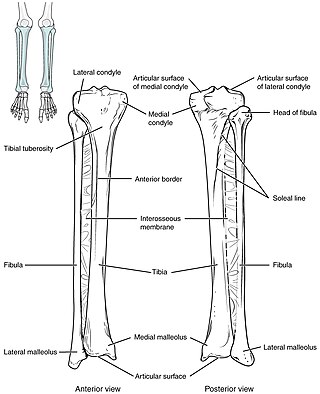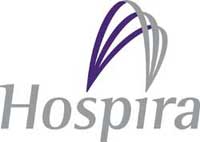Related Research Articles

Stryker Corporation is an American multinational medical technologies corporation based in Kalamazoo, Michigan. Stryker's products include implants used in joint replacement and trauma surgeries; surgical equipment and surgical navigation systems; endoscopic and communications systems; patient handling and emergency medical equipment; neurosurgical, neurovascular and spinal devices; as well as other medical device products used in a variety of medical specialties.
Abbott Laboratories is an American multinational medical devices and health care company with headquarters in Abbott Park, Illinois, United States. The company was founded by Chicago physician Wallace Calvin Abbott in 1888 to formulate known drugs; today, it sells medical devices, diagnostics, branded generic medicines and nutritional products. It split off its research-based pharmaceuticals business into AbbVie in 2013.

Medtronic plc is an American medical device company. The company's operational and executive headquarters are in Minneapolis, Minnesota, and its legal headquarters are in Ireland due to its acquisition of Irish-based Covidien in 2015. While it primarily operates in the United States, it operates in more than 150 countries and employs over 90,000 people. It develops and manufactures healthcare technologies and therapies.

Boston Scientific Corporation ("BSC"), incorporated in Delaware, is a biomedical/biotechnology engineering firm and multinational manufacturer of medical devices used in interventional medical specialties, including interventional radiology, interventional cardiology, peripheral interventions, neuromodulation, neurovascular intervention, electrophysiology, cardiac surgery, vascular surgery, endoscopy, oncology, urology and gynecology. Boston Scientific is widely known for the development of the Taxus Stent, a drug-eluting stent which is used to open clogged arteries. With the full acquisition of Cameron Health in June 2012, the company also became notable for offering a minimally invasive implantable cardioverter-defibrillator (ICD) which they call the EMBLEM subcutaneous implantable defibrillator (S-ICD).

Intraosseous infusion (IO) is the process of injecting medications, fluids, or blood products directly into the marrow of a bone; this provides a non-collapsible entry point into the systemic venous system. The intraosseous infusion technique is used to provide fluids and medication when intravenous access is not available or not feasible. Intraosseous infusions allow for the administered medications and fluids to go directly into the vascular system. The IO route of fluid and medication administration is an alternative to the preferred intravascular route when the latter cannot be established in a timely manner in emergent situations. Intraosseous infusions are used when people have compromised intravenous access and need immediate delivery of life-saving fluids and medications.

Bupivacaine, marketed under the brand name Marcaine among others, is a medication used to decrease feeling in a specific area. In nerve blocks, it is injected around a nerve that supplies the area, or into the spinal canal's epidural space. It is available mixed with a small amount of epinephrine to increase the duration of its action. It typically begins working within 15 minutes and lasts for 2 to 8 hours.
ICD-9-CM Volume 3 is a system of procedural codes used by health insurers to classify medical procedures for billing purposes. It is a subset of the International Statistical Classification of Diseases and Related Health Problems (ICD) 9-CM. Volumes 1 and 2 are used for diagnostic codes.

Hospira was an American global pharmaceutical and medical device company with headquarters in Lake Forest, Illinois. It had approximately 19,000 employees. Before its acquisition by Pfizer, Hospira was the world's largest producer of generic injectable pharmaceuticals, manufacturing generic acute-care and oncology injectables, as well as integrated infusion therapy and medication management systems. Hospira's products are used by hospitals and alternate site providers, such as clinics, home healthcare providers and long-term care facilities. It was formerly the hospital products division of Abbott Laboratories. On September 3, 2015, Hospira was acquired by Pfizer, who subsequently sold off the medical devices portion of Hospira to ICU Medical.
Sargramostim is a recombinant granulocyte macrophage colony-stimulating factor (GM-CSF) that functions as an immunostimulator.
Defibrotide, sold under the brand name Defitelio, is a mixture of single-stranded oligonucleotides that is purified from the intestinal mucosa of pigs. It is used to treat veno-occlusive disease of the liver of people having had a bone marrow transplant, with different limitations in the US and the European Union. It works by protecting the cells lining blood vessels in the liver and preventing blood clotting; the way it does this is not well understood.
Abiomed, Inc. is a medical device technology company that operates as a stand-alone business within Johnson & Johnson's MedTech Segment. Abiomed develops and manufactures temporary external and implantable mechanical circulatory support devices. The company is headquartered in Danvers, Massachusetts with additional offices in Woburn, Baltimore, Berlin, Aachen, and Tokyo.
Teleflex Incorporated, headquartered in Wayne, Pennsylvania, is an American provider of specialty medical devices for a range of procedures in critical care and surgery. Teleflex has annual revenues of $2.4 billion, operations in 40 countries, and more than 15,000 employees. By 2011, the company had substantially realigned to focus on its current business as a medical-device manufacturer, having undergone several years of active acquisitions and divestitures. Teleflex has been associated with Irish corporate tax avoidance tools. Teleflex's chief executive officer (CEO) is Liam J. Kelly; Kelly is also the company's president and former chief operating officer.
Kyriacos A. Athanasiou is a Greek Cypriot-American bioengineer who has contributed significantly to both academic advancements as well as high-technology industries. He is currently a Distinguished Professor at the University of California, Irvine. He joined UCI from the University of California, Davis where he also served as the Chair of the Biomedical Engineering department. Before joining the University of California in 2009, he was the Karl F. Hasselmann Professor at Rice University. He has published hundreds of scientific articles detailing structure-function relationships and tissue engineering approaches for articular cartilage, the knee meniscus, and the temporomandibular joint.
Robert Goldman is an American inventor responsible for pioneering technology in digital media as well as cancer treatment.
ICU Medical, Inc. is a San Clemente, California-based company with global operations. ICU Medical products are designed to prevent bloodstream infections and protect healthcare workers from exposure to infectious diseases or hazardous drugs. ICU Medical product line includes intravenous therapy (IV) products, pumps, needle-free vascular access devices, custom infusion sets, closed system hazardous drug handling devices and systems, sensor catheters, needle-free closed blood sampling systems, and hemodynamic monitoring systems.
The Botulism Antitoxin Heptavalent - (Equine) – BAT, made by Emergent BioSolutions Canada Inc. – is a licensed, commercially available botulism anti-toxin that effectively neutralizes all seven known botulinum nerve toxin serotypes. It is indicated for sporadic cases of life-threatening botulism and is also stockpiled for the eventuality of botulinum nerve toxins being used in a future bioterrorist attack.

Mazor Robotics was an Israeli medical device company and manufacturer of a robotic guidance system for spine surgery that was acquired by Medtronic in December 2018. Surgeons that utilized Mazor Robotics Renaissance generally specialize in orthopedic surgery or neurosurgery.
Tandem Diabetes Care is an American medical device manufacturer based in San Diego, California. The company develops medical technologies for the treatment of diabetes and specifically insulin infusion therapy.
Venous access is any method used to access the bloodstream through the veins, either to administer intravenous therapy, parenteral nutrition, to obtain blood for analysis, or to provide an access point for blood-based treatments such as dialysis or apheresis. Access is most commonly achieved via the Seldinger technique, and guidance tools such as ultrasound and fluoroscopy can also be used to assist with visualizing access placement.

LeMaitre Vascular is an American medical device company established in 1986 by vascular surgeon George D. LeMaitre, and based in Burlington, Massachusetts, which provides devices, implants and human tissue cryopreservation services used by surgeons in the treatment of vascular conditions, particularly peripheral vascular disease. As of 2022, LeMaitre Vascular sells directly to hospitals in 25 countries and through distributors in more than 70 countries throughout North America, Europe and Asia/Pacific Rim.
References
- 1 2 3 Strong, S. (2 December 2013). "Vidacare customer acquisition letter" (PDF). Vidacare Corporation. Retrieved 29 February 2016.
- ↑ Biomed SA Shareholders: Vidacare Corporation
- 1 2 Zacks Equity Research (4 December 2013). "Teleflex Completes Vidacare Acquisition". Yahoo! Finance. Yahoo! Inc. Retrieved 29 February 2016.
- ↑ "Teleflex closes $263M Vidacare buy". MassDevice. 2013-12-03. Retrieved 2020-04-15.
- ↑ Wall Street Journal presents innovation award to Vidacare
- ↑ Sales of Vidacare’s bone marrow system expands nationwide
- ↑ Nursing Consortium Releases Consensus Paper on the Use of Intraosseous Vascular Access for Emergent and Non-Emergent Situations
- ↑ Vidacare Corporation’s EZ-IO Intraosseous Infusion System Hits Growth Milestone with One Million Needle Sets Sold
- ↑ "Interaosseous device and methods for accessing bone marrow in the sternum and other target areas". Google Patents. Google. Retrieved 16 April 2018.
- ↑ Study Shows Rotary Powered Bone Marrow Access Device Results in Shorter Procedure Time, Less Residual Pain, Larger Core Specimens - Results for OnControl Bone Marrow System are “promising”
- ↑ Study Shows Powered Bone Access Device Allows for Accurate Insertion Using Tactile Feedback in Vertebroplasty and Bone Marrow Sampling Procedures